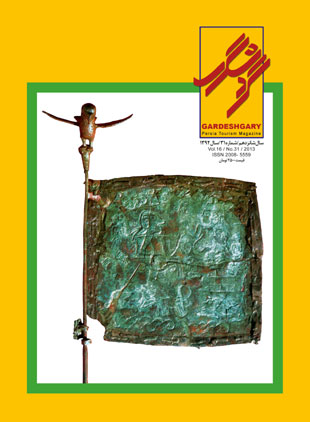Yari City, a Dormant Civilization of the Iron Age
Author(s):
Abstract:
There are many historical, ancient monuments and building across Iran. Truly speaking, a few places can be found in Iran where there isn’t a several year old historical monument. According to some records and reports, it is estimated that there are one million historical monuments and buildings in Iran. Historical monuments existed in Iran can be generally divided into two parts in terms of time: Pre-Islamic and Post-Islamic historical monuments. The ancient monuments belonging to the pre-Islamic era are also classified into two parts in terms of time: pre-historic and post- historic ancient monuments. There is no doubt that the monuments belonging to the post-Islamic periods have been damaged less in comparison to the monuments belonging to the pre-Islamic periods because they were created many years after the creation of the pre-Islamic monuments, and also pre-Islamic monuments, especially the monuments belonging to the pre-historic periods have been damaged and wore out more than the post-Islamic monuments because of natural causes and wars. However, of pre-Islamic works and ancient heritage, there are some ancient works which are not damaged and are virtually in good condition. North west areas of Iran are one of the richest and the most wonderful ancient areas of the County(i.e. Iran).In northwest and west portion of Iran, some parts of Gilan Province, and provinces such as Ardabil, west and east Azarbayjan, Kurdistan, Zanjan, Hamedan, and Kermanshah are included; these parts of Iran are among the areas where different tribes confronted each other and settled down during the history. When the Aryan tribes faced a change in their environment in terms of climate, that is when the climate of the Aryan tribes’ environment became suddenly cold and long-lasting frosts appeared there, they gradually left the banks of Aral river in east north part of the Caspian sea and moved to southern areas. When these tribes approached the east north areas of Iran, some of them continued their path to the south and east south and settled down in eastern parts of the modern Iran: Khorasan and Sistan and Baluchestan Provinces; those settled down in eastern parts of Iran are called the Scythians.
Language:
Persian
Published:
دو ماهنامه گردشگری, No. 30, 1391
Page:
34
magiran.com/p1058761
دانلود و مطالعه متن این مقاله با یکی از روشهای زیر امکان پذیر است:
اشتراک شخصی
با عضویت و پرداخت آنلاین حق اشتراک یکساله به مبلغ 1,390,000ريال میتوانید 70 عنوان مطلب دانلود کنید!
اشتراک سازمانی
به کتابخانه دانشگاه یا محل کار خود پیشنهاد کنید تا اشتراک سازمانی این پایگاه را برای دسترسی نامحدود همه کاربران به متن مطالب تهیه نمایند!
توجه!
- حق عضویت دریافتی صرف حمایت از نشریات عضو و نگهداری، تکمیل و توسعه مگیران میشود.
- پرداخت حق اشتراک و دانلود مقالات اجازه بازنشر آن در سایر رسانههای چاپی و دیجیتال را به کاربر نمیدهد.
In order to view content subscription is required
Personal subscription
Subscribe magiran.com for 70 € euros via PayPal and download 70 articles during a year.
Organization subscription
Please contact us to subscribe your university or library for unlimited access!


